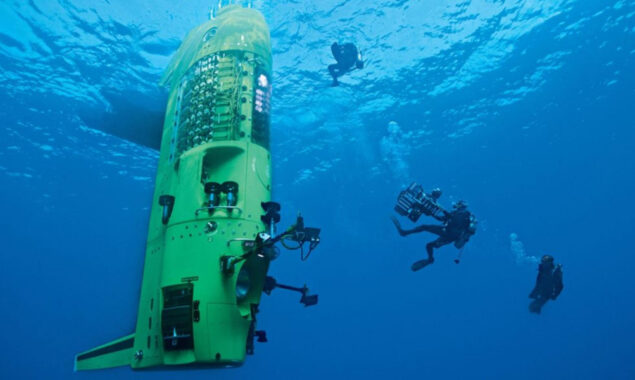Japan fisheries federation remains opposed to gov’t plan to dump toxic Fukushima water
TOKYO, April 5 (Xinhua) -- Japan's fisheries federation said on Tuesday that...

SYDNEY, April 5 (Xinhua) — A team of international and Australian researchers from the University of Queensland (UQ) have devised an all-new approach to marine conservation that analyzes environments across the depth of the ocean.
The study published in the Nature journal on Monday showed a methodology that could expand protected ocean areas by 30 percent this decade.
The team’s model identified unique biomes at three depths of the ocean and at the sea floor. It was then able to calculate the distribution of some 12,932 species included in the model at each depth.
Issac Brito-Morales who helped develop the strategy said it could help conservationists and governments assess the biodiversity of our oceans in unprecedented detail.
“In the past, most marine protected areas were designated in shallow coastal areas — such as coral reefs — and considered the biodiversity in the water column and on the seafloor as one system,” said Brito-Morales.
High seas, or parts of the ocean that are not part of a nation’s maritime zone, make up 61 percent of total ocean area but often are vastly overlooked in their role in marine conservation.
The researchers noted that a subset of these areas presented a unique refuge against the impacts of global warming.
“These areas make up only about 6 percent of the high seas, but are home to a number of at-threat species, such as marine mammals, seabirds, sea turtles and many fish species,” said Brito-Morales.
Senior UQ and CSIRO researcher Professor Anthony Richardson said providing protection to these areas was a big challenge as the majority of conservation efforts exist inside the marine borders or exclusive economic zones of each country.
At present less than 3 percent of the world’s oceans are highly protected. Currently 71 countries have a goal of increasing marine protection targets to 30 percent of the world’s oceans by 2030, according to the researchers.
“If we want to achieve the target without protection for high seas habitats, then marine protected areas would need to cover 75 percent of the area of these zones, which is an unlikely and expensive outcome,” said Richardson.
“So, protecting high seas habitat — or critical areas of it — is essential.”
Catch all the International News, Breaking News Event and Latest News Updates on The BOL News
Download The BOL News App to get the Daily News Update & Follow us on Google News.